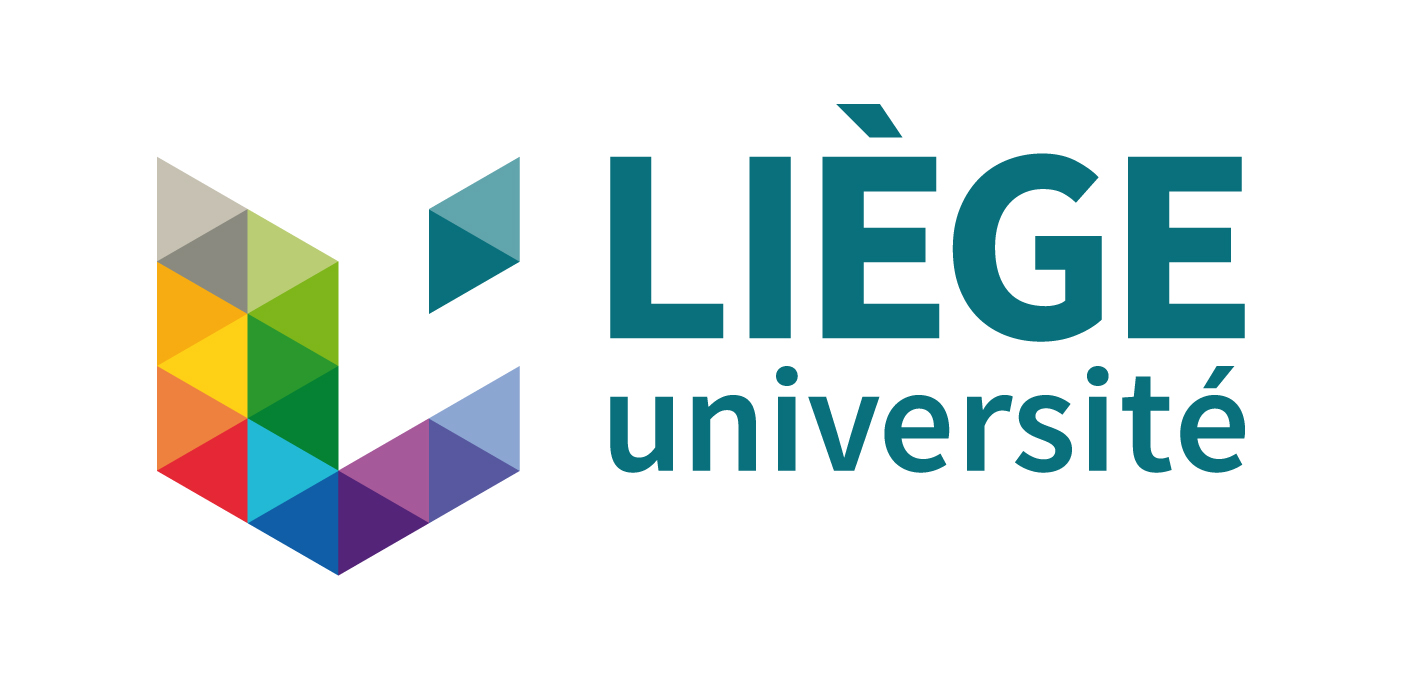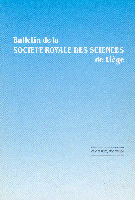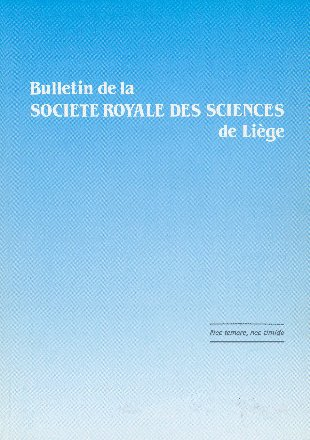- Home
- Volume 94 - Année 2025
- No 2 - Colloque Annuel 2025: L'art au service de l...
- Paint like an Egyptian. Scientific Analysis of the Tombs in the Valley of the Kings
View(s): 1 (1 ULiège)
Download(s): 0 (0 ULiège)
Paint like an Egyptian. Scientific Analysis of the Tombs in the Valley of the Kings

Attached document(s)
original pdf fileRésumé
Le projet Paint like an Egyptian vise à approfondir notre compréhension des techniques de peinture de l’Égypte ancienne grâce à une analyse systématique et non invasive des peintures murales de la Vallée des Rois. En combinant imagerie haute résolution, spectroscopie et microscopie, le projet cherche à identifier les matériaux, les méthodes d’application et les processus de dégradation associés aux décors peints des tombes royales. Ces investigations sont menées in situ, à l’aide d’instruments portables, conformément aux réglementations égyptiennes qui interdisent tout prélèvement d’échantillons et toute extraction d’objets.
La recherche est à la fois analytique et orientée vers la conservation : elle vise à reconstituer les pratiques des peintres de l’Antiquité Égyptienne, à examiner les choix pigmentaires et les techniques de stratification, ainsi qu’à évaluer l’état et la stabilité des œuvres. À cette fin, l’étude intègre une imagerie multi-échelle, allant de la photogrammétrie 3D des chambres funéraires à l’examen microscopique des surfaces.
Abstract
The Paint like an Egyptian project aims to advance our understanding of ancient Egyptian painting techniques through a systematic, non-invasive analysis of wall paintings in the Valley of the Kings. Combining high-resolution imaging, spectroscopy, and microscopy, the project seeks to identify materials, application methods, and degradation processes associated with the painted decorations of royal tombs. These investigations are conducted in situ using portable instruments, in accordance with Egyptian regulations that prohibit sampling and prohibit object removal. The research is both analytical and conservation-driven: it aims to reconstruct the practices of ancient painters, examine pigment choices and layering techniques, and assess the condition and stability of the artworks. To this end, the study integrates multi-scale imaging from 3D photogrammetry of entire tomb chambers to microscopic surface examination.
Table of content
Received: 17 November 2025 – Accepted 26 November 2025
This work is distributed under the Creative Commons CC BY 4.0 Licence.
Invited talk given at the annual colloquium of the Société Royale des Sciences de Liège on « L’art au service de la science, la science au service de l’art », University of Liège (Belgium), 28 November 2025.
1. Introduction
1The Pharaonic civilization stands as one of the most enduring cultural legacies of the ancient world. Its painting tradition, marked by a distinct and highly formalized style, is instantly recognizable. This stylistic consistency is rooted not only in aesthetic preferences but also in a carefully regulated artistic process—a workflow that scholars have partially reconstructed through theoretical studies and archaeological evidence [1–5].
2It is generally believed that the painting process began with preliminary sketches in red ochre applied to plastered, smoothed walls, often following compositional guides or modular grids. These outlines were then filled with white or colored background layers, sometimes leaving space for later details. Color was applied next, frequently using mixtures and layered applications to achieve tonal variation. Final outlines and intricate details were redrawn, again using red ochre. To complete the composition, any overpaint or stray marks were corrected with an opaque white overlay.
3This reconstruction of the painting sequence is, however, largely based on unfinished tomb decorations and artistic sketches on ostraca—pottery fragments—primarily from the 18th and 19th Dynasties, which are considered to be the golden age of Egyptian wall painting. As such, these conclusions should only be generalized with caution, as techniques likely varied by period, substrate, and individual workshop or artist.
4While modifications to painted scenes during or after execution have been noted, they appear to be relatively rare [6]. Yet, because the painted surfaces are typically opaque and many analyses have relied solely on visual inspection, it is likely that many alterations remain undetected. In this context, our study explores two notable cases of such revisions, using advanced chemical imaging methods to uncover the physical evidence underneath the visible layers. These tools allow us to ask—and potentially answer—a fundamental question: is there more to Egyptian tomb paintings than meets the eye?
2. Paint like an Egyptian
5The Valley of the Kings, located on the west bank of the Nile near Luxor, Egypt, is a major archaeological site of exceptional heritage value. It houses the tombs of many pharaohs of the New Kingdom, including those of Ramses II, Thutmose III, and Tutankhamun. This site reflects the architectural and artistic ingenuity of the ancient Egyptians, with frescoes and hieroglyphs of unparalleled richness. The rock-cut tombs bear witness to the complex funerary beliefs and the pharaohs’ quest for immortality. The desert environment has contributed to the remarkable preservation of many remains. Listed as a UNESCO World Heritage Site since 1979, the Valley of the Kings is a universal symbol of the cultural wealth of humanity. It continues to attract researchers, enthusiasts, and visitors from around the world, thereby reinforcing its status as an invaluable heritage treasure.
6The interdisciplinary project “Paint like an Egyptian” aims to systematically and serially characterize in situ the execution techniques and materials used in the painted decorations of the tombs in the Valley of the Kings. This will be achieved using portable, non-invasive analysis and imaging systems. In the past, the study of painted decorations was often limited to visual observation. Over time, it has been enriched through physico-chemical analyses conducted in laboratories. The development of portable instruments has marked a decisive turning point, enabling direct, non-invasive analysis of monuments on-site. This technological evolution has opened new avenues for researchers in heritage science, particularly Egyptologists, allowing them to collect unprecedented analytical data while preserving the physical integrity of the artworks. The adoption of these in situ techniques remains relatively recent in the Egyptian context, largely driven by national regulations prohibiting sampling. Through this approach, we aim to deepen our understanding of the work of ancient Egyptian painters and draftsmen, based on the materiality of these exceptional remains.
7Our contribution lies in providing a comprehensive overview of each studied tomb—from its macroscopic structure, via 3D photogrammetry reconstructions, down to the microscopic level, by identifying the materials used and their application techniques.
8This project is the result of close collaboration between the European Centre for Archaeometry (CEA, for Centre Européen d’Archéométrie), the Laboratory of Molecular and Structural Archaeology (LAMS, for Laboratoire d’Archéologie Moléculaire et Structurale, UMR CNRS–Sorbonne University), and the Centre for Studies and Documentation on Ancient Egypt (CEDAE, for Centre d’étude et de documentation sur l’ancienne Égypte) of the Supreme Council of Antiquities (SCA). It builds on the scientific expertise developed by the same team during measurement campaigns conducted in eight tombs of the Theban Necropolis between 2018 and 2024 [7]. The team from the University of Liège is led by David Strivay, and includes Catherine Defeyt, researcher in technical art history, and Edène Derzelle and Nathan De Vries, PhD students in physics.
9The first two missions in 2024, supported by the King Baudouin Foundation (Comhaire Fund), were carried out in the tombs of Thutmose III and Amenhotep II, the oldest tombs in the Valley of the Kings. Analyses revealed, among other things, the rare use of high-quality pigments and an unprecedented blending of colors. These findings challenge long-held assumptions about Egyptian art. The in-depth study of materials and artistic techniques also provided new insights into the symbolism behind pigment choices and stylistic evolution. These discoveries will soon be published in high-impact scientific journals.
10In the next years, we will continue our serial and chronological investigations in the tomb of Thutmose IV (the third pharaoh buried in the Valley of the Kings). In addition, at the request of the Egyptian authorities, we have the exceptional and unique opportunity to conduct research in the tombs of Tutankhamun and Nefertari. Due to recent conservation issues, the tomb of Nefertari has been closed to visitors. Although the Getty Conservation Institute (GCI) has carried out two major conservation projects in these tombs, challenges remain, and ongoing interventions are necessary to ensure their preservation. A new in-depth study is therefore required. This conservation dimension is now an integral part of our broader goals of material and historical research.
11Because of its exceptional heritage value, the Valley of the Kings is an archaeological site of inestimable importance, both historically and culturally. Given the richness and fragility of this heritage, the scientific and conservation stakes are extremely high. It is therefore essential to rely on cutting-edge technologies and high-quality equipment to document, analyze, preserve, and transmit this legacy to future generations under the best possible conditions.
12Imaging plays a vital role in archaeometry and heritage conservation [8]. In addition to high-resolution photography and photogrammetry, optical microscopy is often essential. Since sampling is not allowed, the use of portable digital optical microscopes presents a suitable alternative. Our team has implemented this approach for many years. However, the microscopes used until now have notable limitations, including low magnification and shallow depth of field, which affect image quality—especially on painted surfaces.
Acknowledgments
13This project is supported by the Fondation Roi Baudouin (Fondation Comhaire).
Further Information
Authors’ ORCID identifiers
140000-0002-0972-2347 (Catherine Defeyt)
150009-0006-0230-398X (Edène Derzelle)
160000-0001-7772-1023 (Maguy Jaber)
170000-0001-9009-7958 (David Strivay)
180000-0002-1804-8374 (Philippe Walter)
Author contributions
19All the authors have been involved in the project.
Conflicts of interest
20The authors declare no conflict of interest.
Bibliographie
[1] Bryan, B. M. (2010) Pharaonic painting through the new kingdom. In A Companion to Ancient Egypt: Volume I, edited by Lloyd, A. B., chapter 43, pages 990–1007. Wiley–Blackwell, Chichester (UK). https://doi.org/10.1002/9781444320053.ch43.
[2] Tiradritti, F. (2008) Egyptian Wall Painting. Abbeville Press Publishers, 391 pages. (Trans. from the Italian by Shore, M.).
[3] Hartwig, M. (2016) Method in ancient Egyptian painting. In Artists and Painting in Ancient Egypt. Proceedings of the colloquium held in Montepulciano, August 22nd –24th, 2008, edited by Angenot, V. and Tiradritti, F., number 1 in Studi Poliziani di Egittologia. Missione Archeologica Italiana a Luxor, Montepulciano (IT).
[4] Andreu-Lanoë, G. (editor) (2013) L’art du contour–Le dessin dans l’Égypte ancienne. Louvre Éditions / Somogy éditions d’art, Paris (FR).
[5] Iversen, E. and Shibata, Y. (1975) Canon and Proportion in Egyptian Art. Aris and Phillips, Warminster (UK), 94 pages.
[6] Hartwig, M. (editor) (2013) The Tomb Chapel of Menna (TT 69): The Art, Culture, and Science of Painting in an Egyptian Tomb, American Research Center in Egypt - Conservation Series, volume 5. The American University in Cairo Press, Cairo (EG), 1. edition.
[7] Martinez, P., Alfeld, M., Defeyt, C., Elleithy, H., Glanville, H., Hartwig, M., Hocquet, F.-P., Jaber, M., Martinetto, P., Strivay, D., and Walter, P. (2023) Hidden mysteries in ancient Egyptian paintings from the Theban Necropolis observed by in-situ XRF mapping. PLoS ONE, 18(7), e0287647. https://doi.org/10.1371/journal.pone.0287647.
[8] Vandivere, A., Wadum, J., and Leonhardt, E. (2020) The Girl in the Spotlight: Vermeer at work, his materials and techniques in Girl with a Pearl Earring. Heritage Science, 8, 20. https://doi.org/10.1186/s40494-020-0359-6.
[9] Cucci, C., Picollo, M., Chiarantini, L., Uda, G., Fiori, L., De Nigris, B., and Osanna, M. (2020) Remote-sensing hyperspectral imaging for applications in archaeological areas: Non-invasive investigations on wall paintings and on mural inscriptions in the Pompeii site. Microchemical Journal, 158, 105082. https://doi.org/10.1016/j.microc.2020.105082.
To cite this article
About: Catherine Defeyt
Musées royaux des Beaux-Arts de Belgique, B–1000 Bruxelles, Belgique
About: David Strivay
dstrivay@uliege.be






